BDP8: Recreating a Babylonian Wonder
Posted by Huw,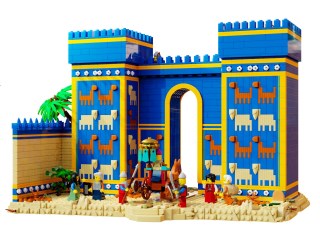
Here is the next in our series of articles about Bricklink Designer Program series 8 projects, published ahead of the close of voting on Friday.
Hello dear readers! I’m Pau and I have been building MOCs for the better part of a decade. I’m perhaps best known for designing modular buildings. A couple of years ago I wrote a pair of articles for Brickset about how to go about designing them ( 1 | 2 ).
This time around, I’m writing about how my latest project for the Bricklink Designer Program came about.
I have always liked ancient history, with Mesopotamia arguably being my favourite of all civilisations, especially the city of Babylon. One of the best known monuments from ancient Babylon is the Ishtar Gate. These days it sits in a reconstructed form in the Pergamon Museum in Berlin, but back when it was built in 569BC, it was the grandest entrance to the city of Babylon. Babylon had regained its independence after the demise of the Assyrian Empire for the first time in close to a thousand years during the time of Hammurabi (yes, famous for the legal texts!), so they did not cut corners when rebuilding it bigger and better than ever before.
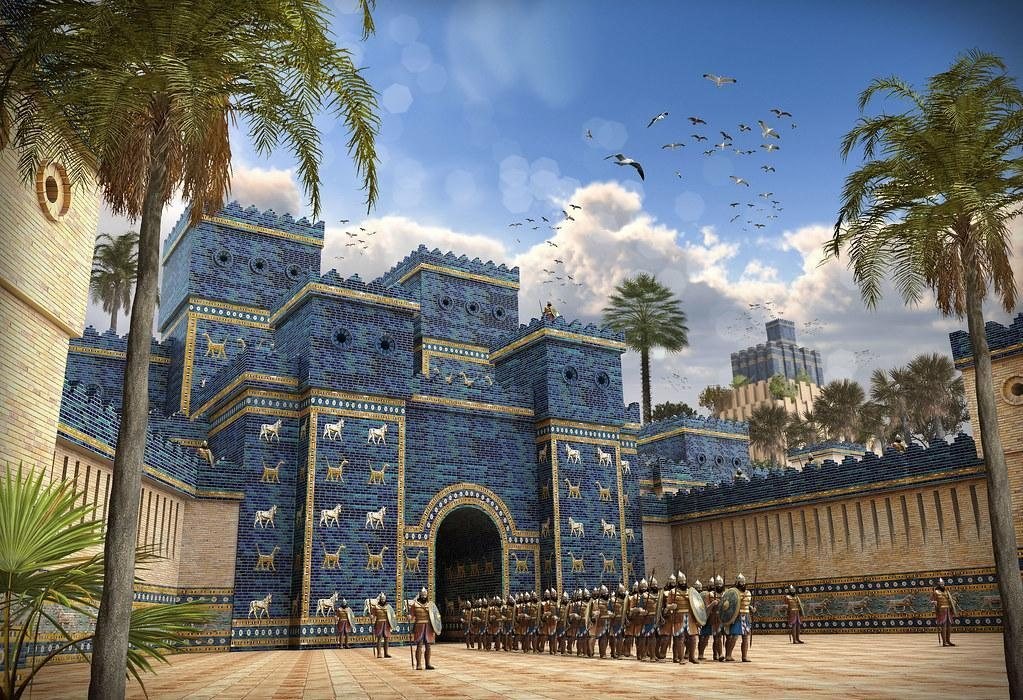
Digital recreation of the Ishtar Gate and the Processonal Way by Bruce Long. Looking at this image, it is clear that recreating all of this is close to impossible, so some compromises had to be made.
Starting the model
Any model that is trying to recreate anything real should, in my opinion, strive to do the reference material justice in two ways: first, it must instantly be recognisable as the reference, and secondly, it must understand the source and honour it. As you will see, this second aspect was particularly key for me.
This model did not start from scratch. I had done a rendition of the Ishtar Gate previously, albeit it was in a different context. This model was part of a made up original theme I came up with. This theme was called Mission:Lazarus and consisted of astronauts exploring potential planets for future humanity to inhabit (Interstellar rip-off, I know). This was a set based on the moon of Ashtar, where there were space horses and babylonian-looking structures. This model purposefully exaggerated the proportions and decontextualised the original, but it was a base to work from.
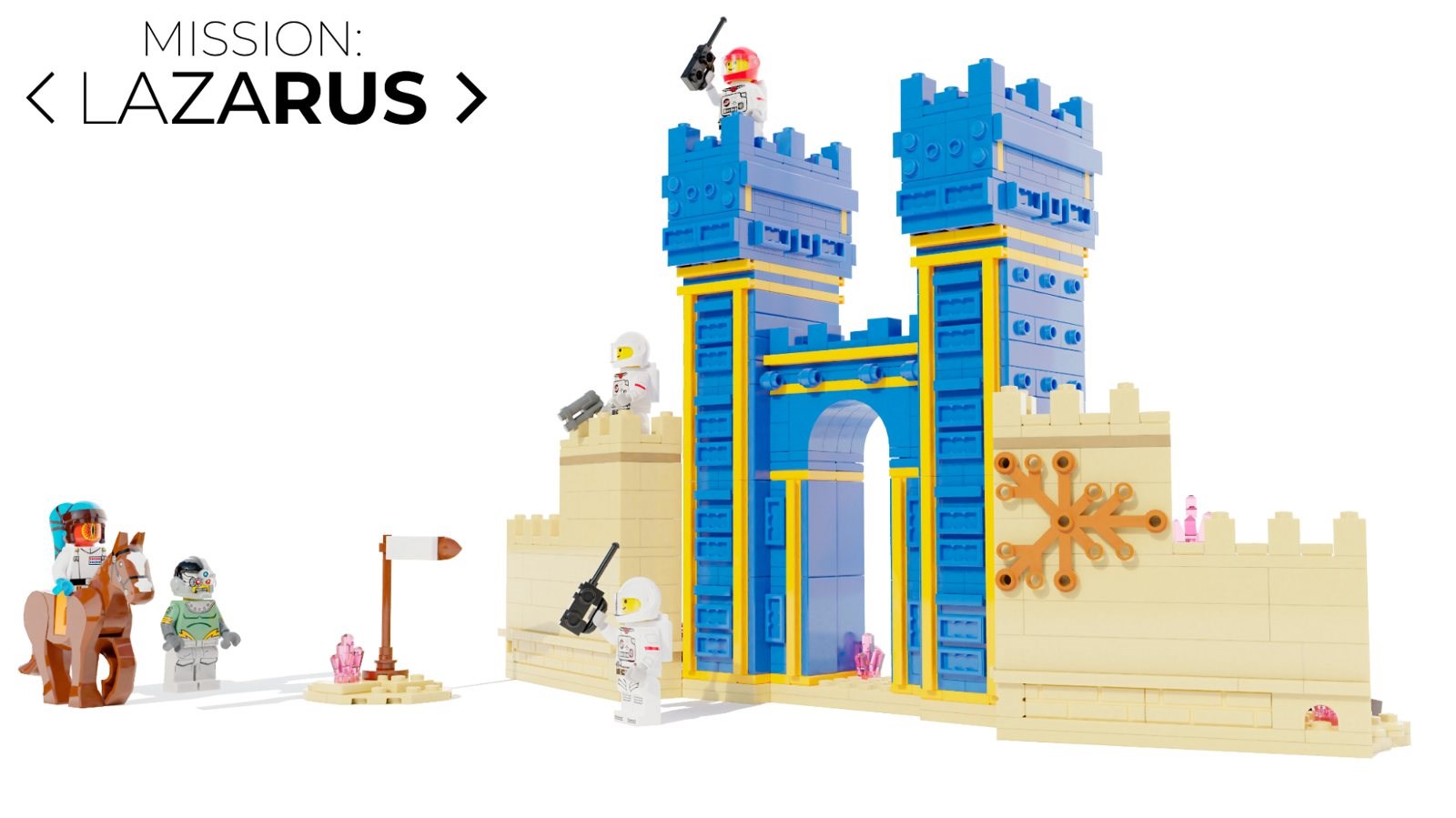
One of the first things I do is try to mentally visualise the overall size and scale of the model. In general I think it’s useful to have a clear goal in mind. In my case, this was: to create a real scene happening at the gate at minifigure scale (or at least close to it). Also, I wanted it to be somewhat reasonable in price, so somewhere in the 2500-3000 piece range.
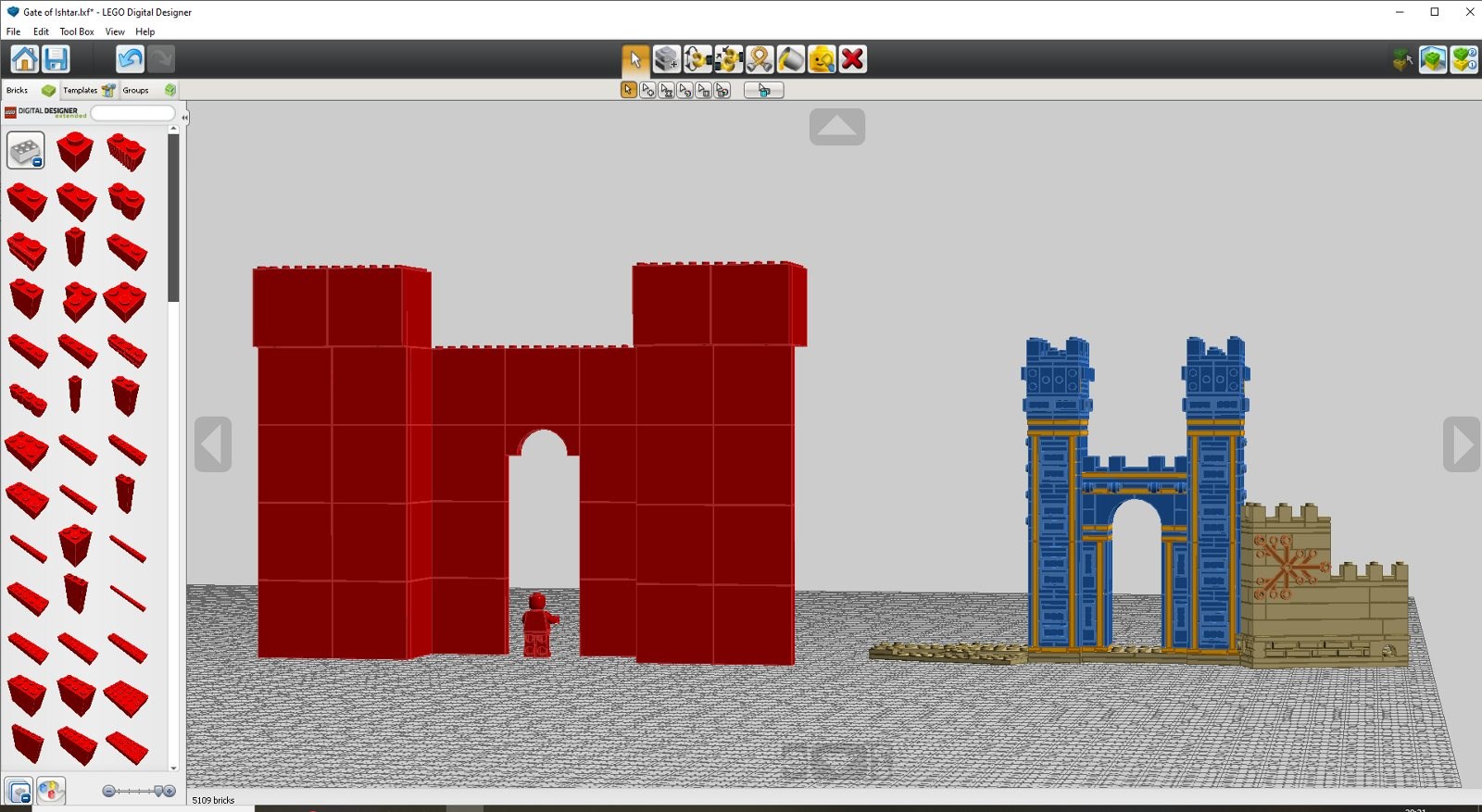
First rough sketch for general dimensions. Yes, I still use LDD for most of my building, it remains the best software.
At this point, I started gathering references, both of the architectural piece itself and of Babylon during Neo-Babylonian times. This is the moodboard I worked with. In it, is a mix of the general mood I wanted to capture, specific details of the gate such as the animals, as well as important objects of the time and how people might have looked and dressed.
I use moodboards to remind myself of things I’d like to include and to keep a clear view of what the final model should aspire to feel like.
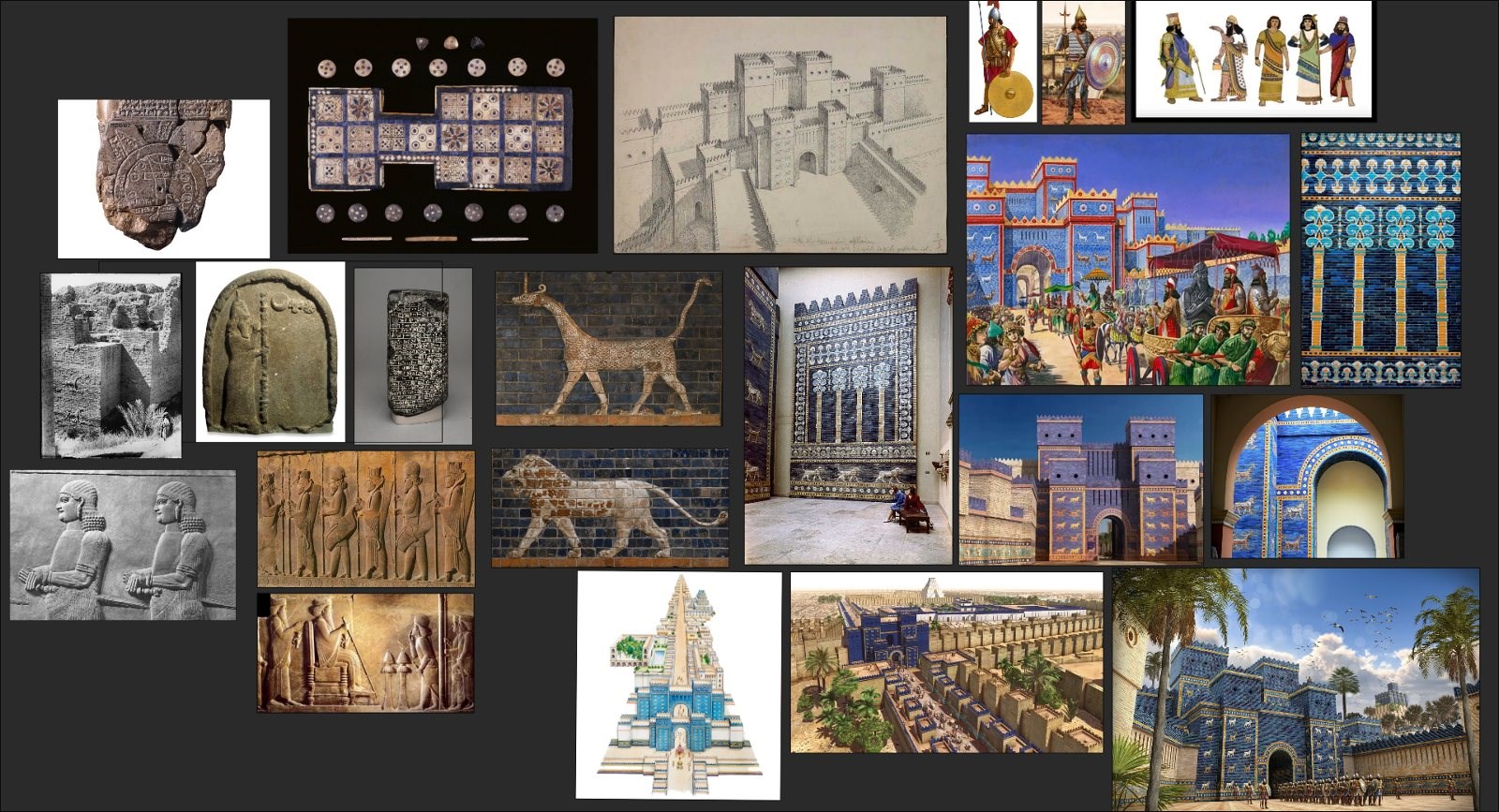
Another important overarching question was deciding the time period. Do I want it in its heyday, maybe a few centuries abandoned, during the first archeological excavations in the 19th century? I decided to depict the heyday, during sometime in the 6th century BC.
Getting the main elements right
Once the building blocks (pun very much intended) are laid, I started building the gate itself. I generally build quite messily, starting from all sorts of places. In this case, I started with the mosaic wall with the bas-reliefs of the animals. Mainly because I felt that if I could not get this element right, there was not much point carrying on. The original has an alternating pattern of the mythological muš?uššu dragon and aurochs.
A key element for the bas-reliefs is that the originals are, as the name suggests, rather flat. I initially tried building the wall with regular bricks and the animals in SNOT, but it was way too bulky. Then I switched to building the entire wall sideways and using plates to create the shapes of the animals. The heads are the only part that protrudes the wall. I felt this was necessary because the heads of the dragons and the aurochs are so different in shape and size that the plates did not convey that difference well. Sometimes, simple pieces used ingeniously can be incredibly effective.
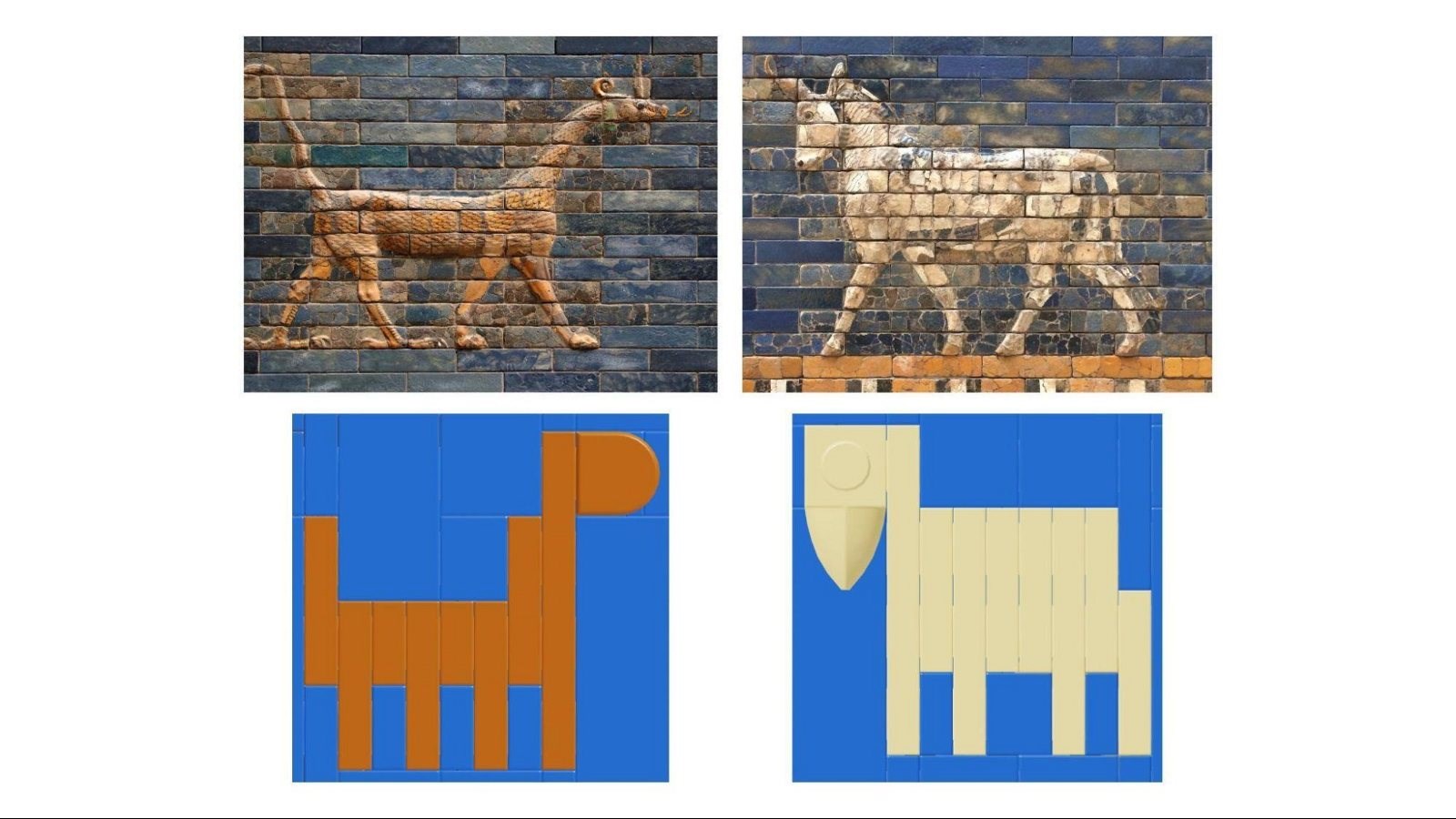
The slimmer body of the dragon is represented with a 1-brick-tall body whereas the girthier auroch is 2-bricks tall, which gives it more presence, just like in the real gate. The pointy tail of the dragon add quite a bit of personality to the animal, I think.
Sometimes, in order to keep the proportions of the original, some of the details have to be altered. In this case, the original has a grid of 5x2 animals per side when viewed from the front. With the already pretty compact technique I was using for the animals, a 5x2 would have thrown off the proportions of the gate, which is why I switched it to a 4x2. The animals in front of the main arch were also reduced from 3 to 2.
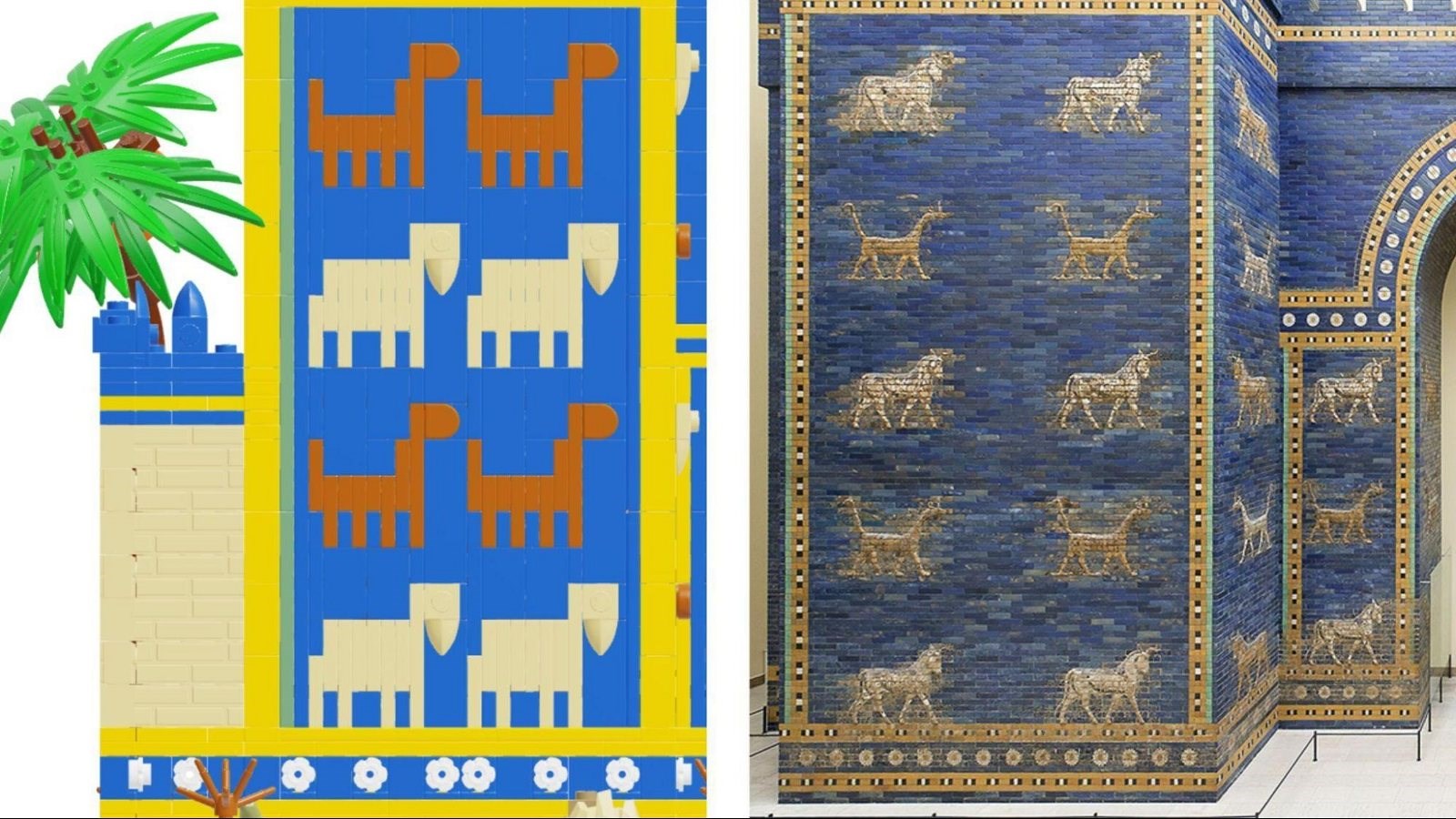
4x2 layout on my gate, as opposed to the original 5x2 layout. An adjustment that is hardly noticeable unless one has a deep knowledge of the gate. The alternative, changing the proportions would have been way more noticeable for a lot more people.
The towers are 12-bricks-wide, fairly standard (build in even numbers, kids, much easier!), but at the battlement area, the original gets larger, but not a full brick larger, which is why I placed it at a rather fun half-brick offset, resulting in a 13-brick-wide battlement. This also results in a spacing of the merlons which is closer to the real one, with a half-brick gap between them.
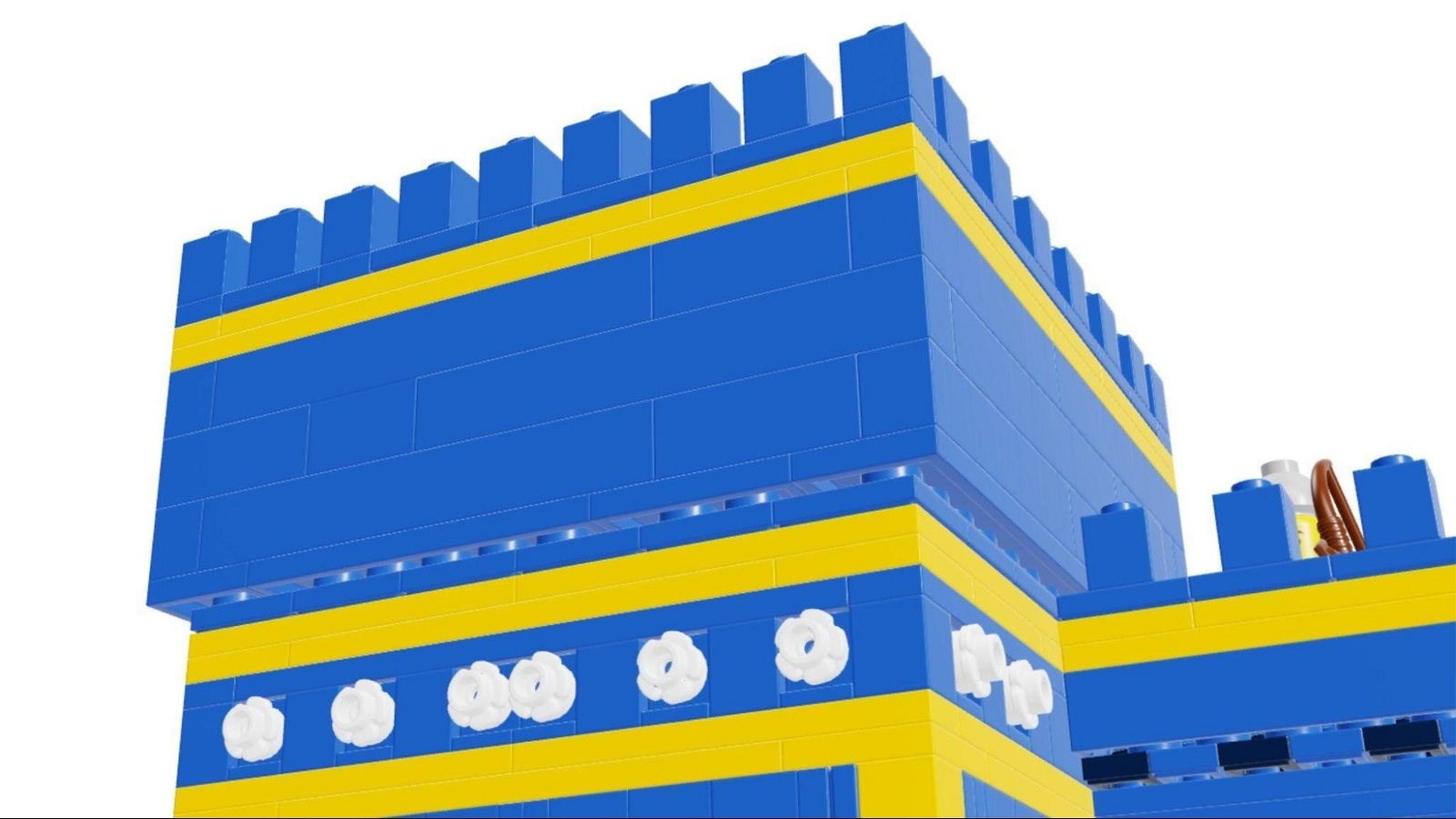
Transition from even (12-brick) part to odd (13-brick) part
The rest of the gate flowed rather naturally, but once I had it mostly complete, something was bugging me. I felt it was way better to showcase it from a slight three-quarter view, as in, seeing it mostly upfront, but seeing a part of the side to truly grasp its scale. This meant placing it on a trapezoid base and adding a smidge of the wall of the processional way to give context to where it sits. The composition felt off, so I ended up adding the date palm tree to smooth the transition between the two elements.
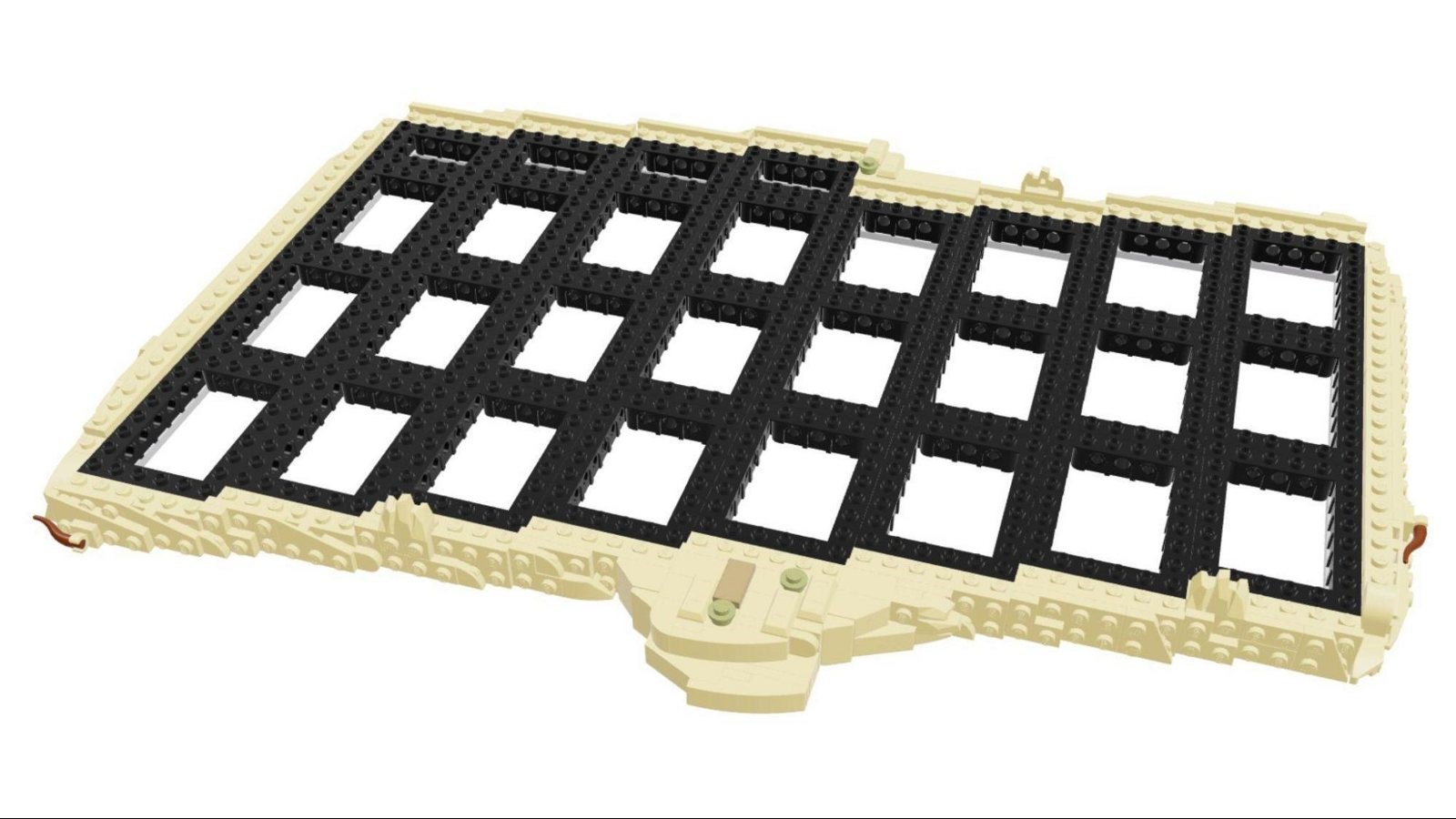
A strong trapezoid base required some fun with Technic frames and brackets to ensure a smooth geometry outside!
Honouring Ancient Babylon
For me, a great Lego model is a bit like a great painting. From afar, the proportions have to seem right, the subject matter should be interesting; and the colours must be attractive and cohesive. But it’s equally important to add smaller points of interest spread out around the model, so it doesn’t feel stale on closer inspection. And we all like a fun and varied build after all! In this case, I was very lucky that there are so many interesting objects to pick and choose from. I felt a strong responsibility to make the centuries of culture justice.
In the front of the model, there are three main elements. Over to the left, a tamarisk plant. Tamarisks grow in salty soils and are to this day abundant in the region. I put it pretty close to the date palm because there is a rather funny Akkadian poem from the 18th century BC where a tamarisk and a date palm dispute which is the best of the two. Right next to it lies the Basalt Monument of Esarhaddon. This rock records Esarhaddon’s restoration of Babylon. The rock is foreign and tells the story of a foreign –Assyrian– king, rather poetic. Over to the right lies the Stela of Nabonidus, the last Neo-Babylonian ruler (you could call its inclusion an anachronism), placed metaphorically at the edge of the model. I included it because it shows the king worshipping the sun god Ishtar (after whome the gate is named), and moon god Sin, instead of Marduk, the traditional deity of Babylon. This dispute caused Babylon’s eventual demise, with Cirus the Great, the Persian king, invading Babylon claiming to be restoring the cult to Marduk.
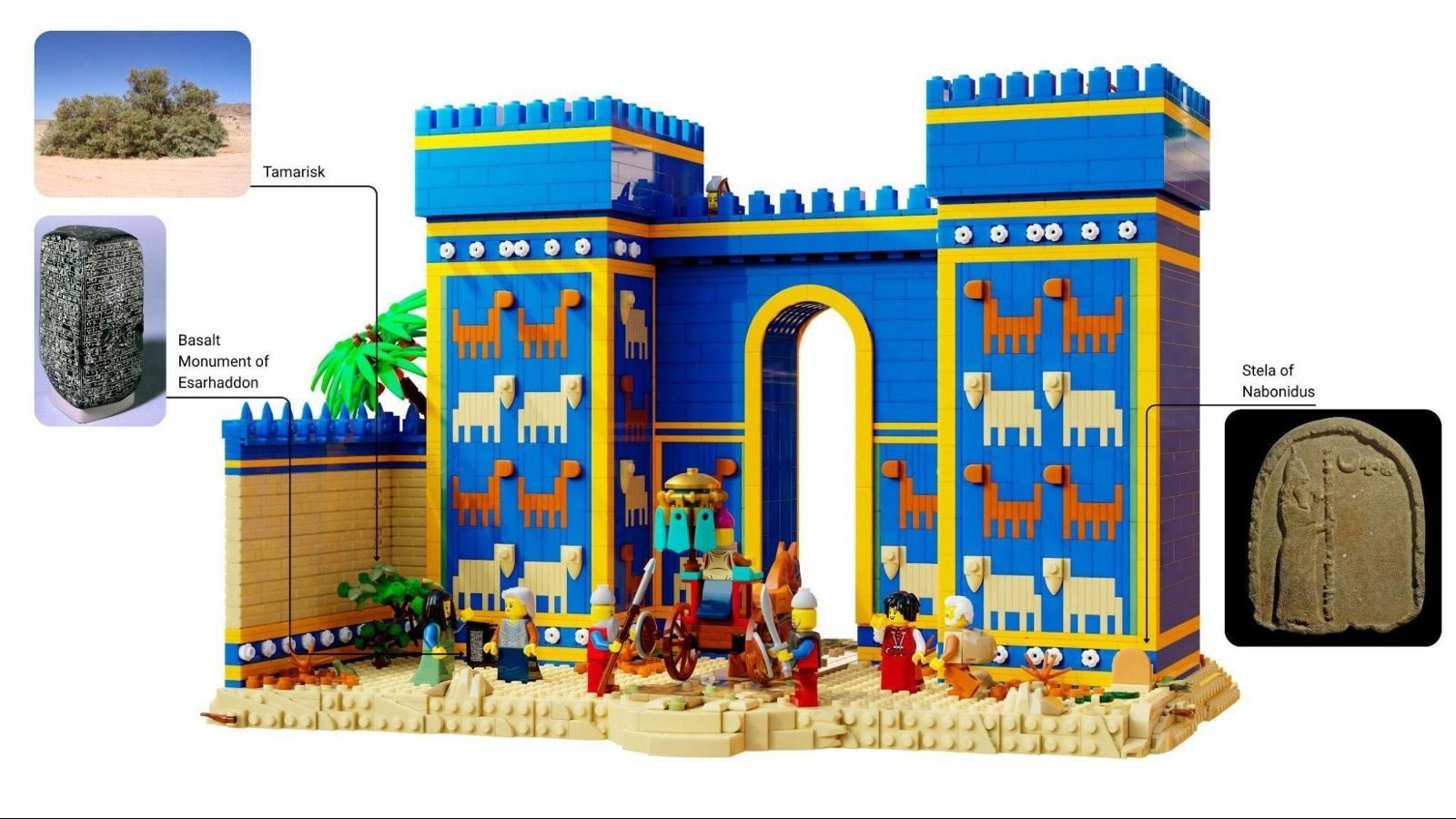
Note how I usually place all these elements to complement and frame the main model.
The large towers of the gate offered a unique opportunity: using the insides for a full set of interiors in a dollhouse fashion. It’s unknown what exactly the original had on the inside (probably ladders and platforms as this was, after all, a defence tower), but regardless, I took this opportunity to showcase the two sides of life in Ancient Babylon. On the left, the throne room of the king, and on the right, a collection of items from the everyday life of regular citizens.
The thorne room contains the throne, a staff and a chest. There are no remains of any of these elements, which means they were most likely made from perishable materials, such as wood. A staff next to the king is present in many carvings. The mosaic that stood behind the throne today is kept next to the gate in Berlin and is perhaps one of the most famous mosaics ever created, with a palm tree scene, flower motifs and lions.
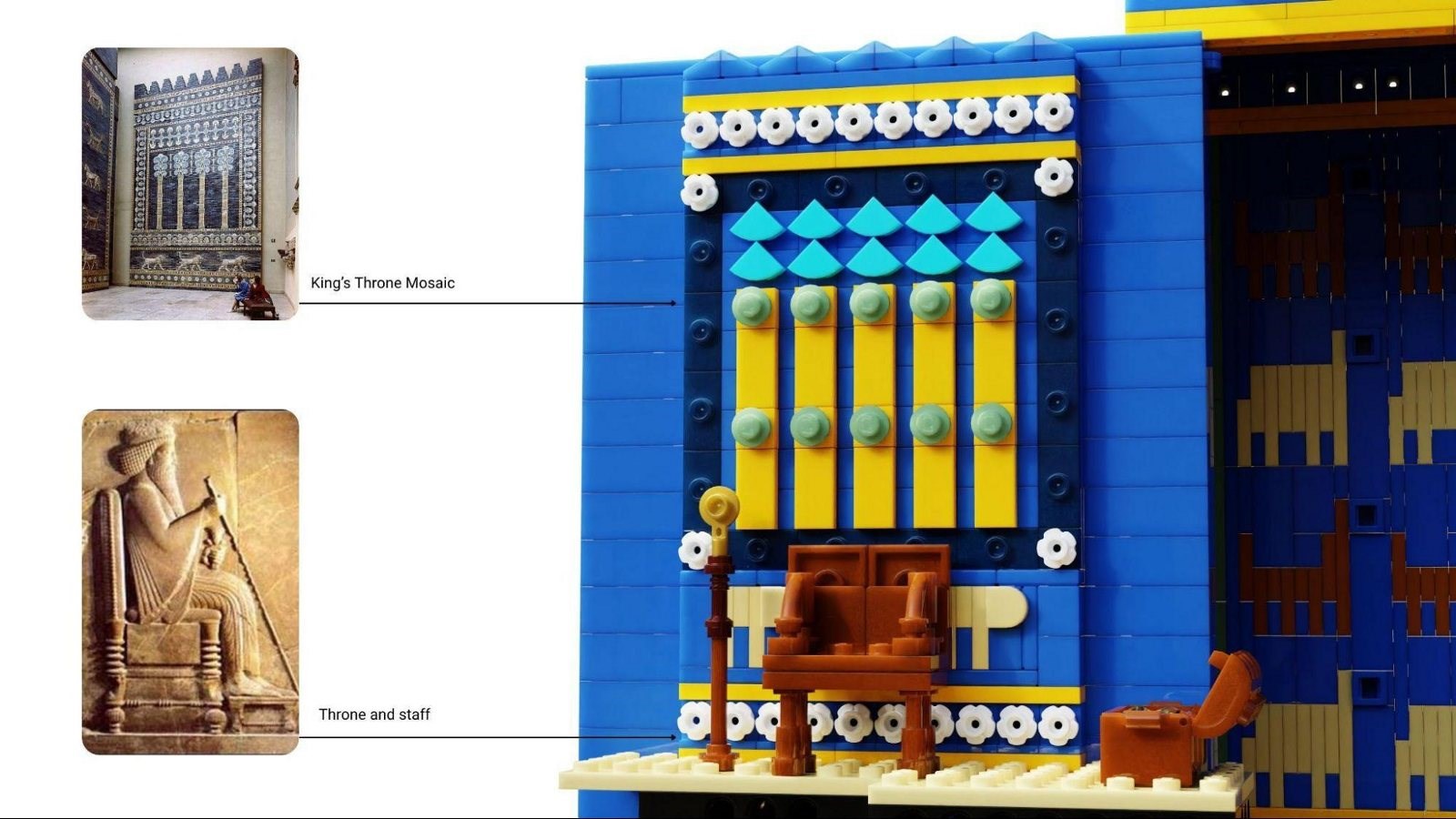
The throne room. A fun NPU with the plant stalks as the arms of the chair.
The right part contains objects regular people used, such as the Game of Ur, a two player race board game, stone frog weights (which were surprisingly common), statuettes, a head statue of a muš?uššu head (yes, that’s the baby carrier piece) tablets, cylindrical seals (their equivalent of a signature was rolling one of these on wet clay!) and even the world’s oldest map.
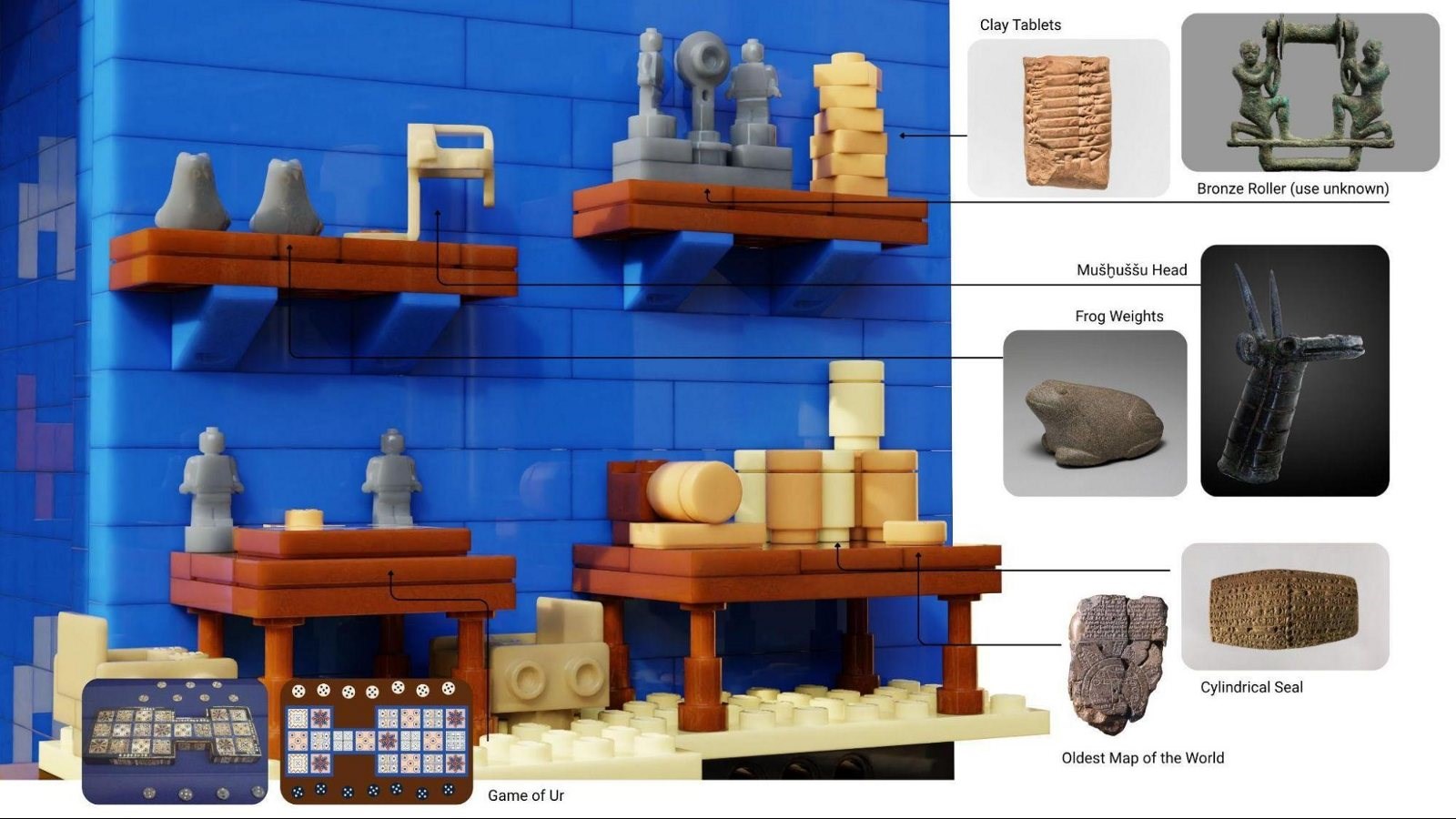
The living quarters, filled to the brim with commonplace objects. I like how I was able to capture a bit of everything. From practical objects, to entertainment, to religious items.
Akitu
If there is one event that took place yearly where the Gate filled with life, that was the start of Akitu. Akitu was the babylonian New Year. It began with the entrance of the king on a horse-drawn chariot surrounded by swathes of people. Akitu had many fun festivities, perhaps the best known one is the humbling of the king, where he would be slapped by the priest in front of the image of Marduk, so he was reminded who truly ruled Babylon.
To recreate the entrance of the king, I needed to understand how the different people of Babylon dressed during the 6th century BC. I chose to represent the king, soldiers and some male and female civilians. The king is well documented in imagery, and so are soldiers. Both are often shown wearing conical hats and robes. The Bricklink Designer Program also has some limitations on what elements can be used, but I think that the scene created is reasonably realistic.
I also took a look at original pictures from the excavation to see how the tiling on the processional way might have looked like. It was a sort of square clay tile pattern, which I recreated for the model.
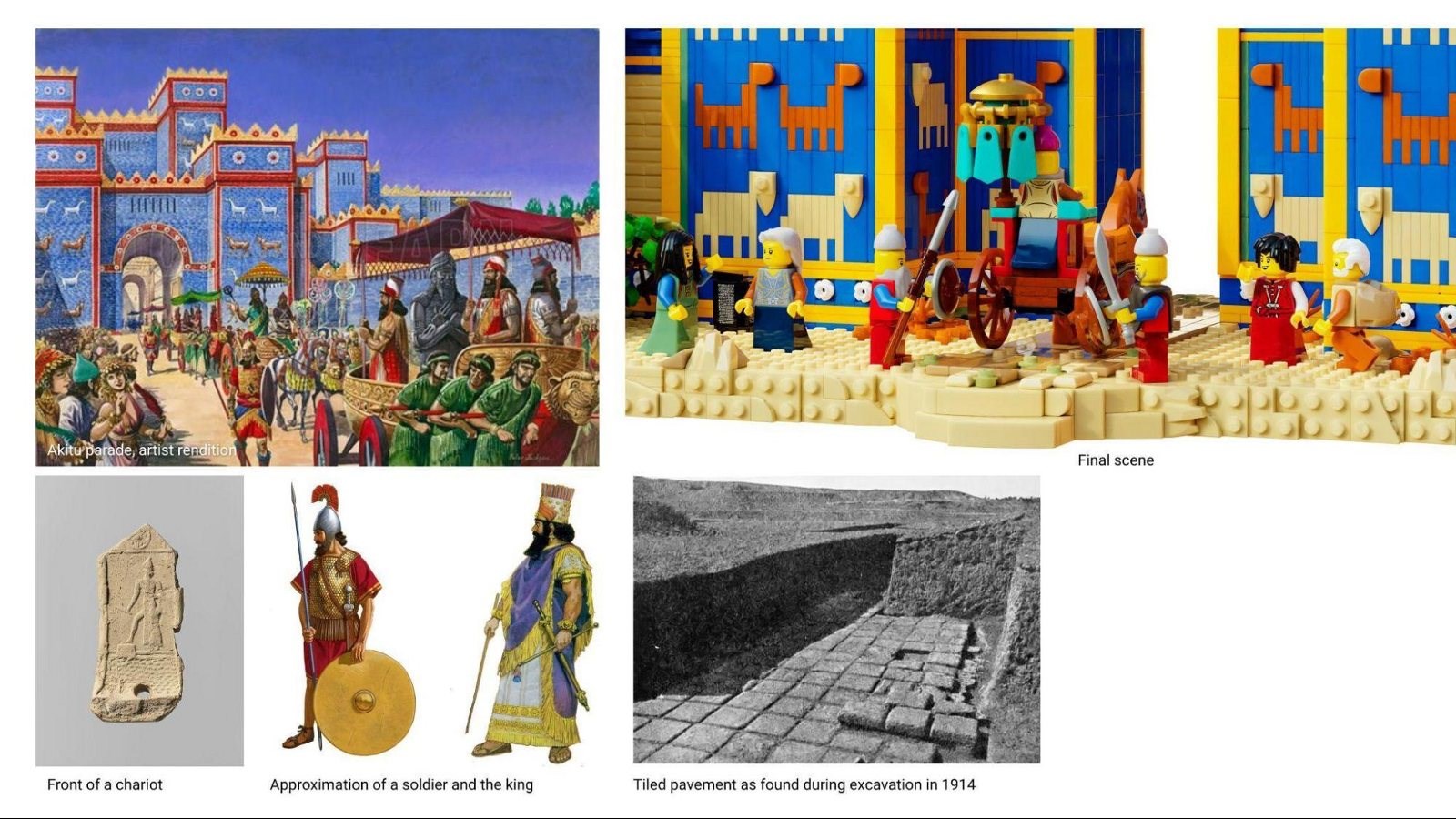
Bringing the street scene to life
And this concludes the tour around the Ishtar Gate! I hope you enjoyed reading along, maybe learned a thing or two about the fascinating history of Babylon and hope you enjoyed the build! Please leave your comments, if you have any comments or doubts I’ll make sure to answer.
This model is part of Bricklink Designer Program Series 8, if you’d like to give it a vote!
91 likes
13 comments on this article
Looks great! I am curious about why you selected that shade of blue; I haven't seen the actual gate in person, but pictures make it look quite a bit darker.
"I still use LDD for most of my building, it remains the best software." It is dead software for almost 6 years. You need to switch to stud.io, and stud.io is the best Lego software
@gsom7 said:
""I still use LDD for most of my building, it remains the best software." It is dead software for almost 6 years. You need to switch to stud.io, and stud.io is the best Lego software"
I also find LDD to be superior - I've been using it since 2005.
@TheNameWasTaken said:
"Looks great! I am curious about why you selected that shade of blue; I haven't seen the actual gate in person, but pictures make it look quite a bit darker."
Actual colors are hard to tell as ink and dyes tend to fade. Babylon was destroyed almost 2600 years ago and their building methods used a lot of mud bricks which didn't last as long as the stone and marble of some other ancient civilizations.
I do really like this model but I wish it included a bit more--something like this: https://dl2.myminifactory.com/object-assets/611cd3ac62a0f/images/720X720-img-9864.jpg
This is beautiful! I would love this in my living room. Too bad Lego refuses to give us anything from Middle Eastern/Islamic history. Closest we got is sets for the horrible (and racist) Prince of Persia movie. This theme is the only source for minifigure parts MOC designers could use for Islamic builds in forever, since we never got anything similar.
So much thought has been put into this. I appreciate all of the small objects from the point of view of art history.
@TheNameWasTaken said:
"Looks great! I am curious about why you selected that shade of blue; I haven't seen the actual gate in person, but pictures make it look quite a bit darker."
I wonder if the dark blue parts were not available in the NDP pallette.
I'm a bit of an archaeology fan so I appreciate the effort that went into this.
Nice work!
@TheNameWasTaken said:
"Looks great! I am curious about why you selected that shade of blue; I haven't seen the actual gate in person, but pictures make it look quite a bit darker."
Hi! The designer here. Yes, it is mostly down to availability of pieces in dark blue. Full sets of plates and tiles were available, but not others such as the arches or the tooth elements for the cornice of the processional way.
As others have suggested, the vibrancy of the blue of the original is hard to say for certain. Darkening over time is certainly likely. Meaning that a stronger shade of blue to represent it on its heyday is actually quite realistic!
Thank you all for the nice comments. Glad you like it!
Just incredible. As a history buff i'm all over this.
Marvelous.
Fabulous design with great attention to details throughout.
Love it.
Hope this comes out soon.
Since the Pergamon museum in Berlin which houses the Ishtar Gate is being renovated until 2037 (!) I would love to have this as a LEGO set until I will finally be able to see it IRL